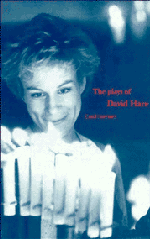Book contents
- Frontmatter
- Contents
- Acknowledgements
- Introduction: a statement of departure
- 1 The sixties revolution
- 2 Stepping into the past
- 3 A turning over
- 4 The people's war and peace
- 5 Sense of an ending
- 6 The foundry of lies
- 7 Dreams of leaving
- 8 Drawing a map of the world
- 9 All our escapes
- 10 Painting pictures
- 11 The moment of unification
- 12 Strapless
- 13 Heading home?
- 14 Stepping into the future
- Conclusion: a statement of arrival
- Notes
- Select bibliography
- Index
Conclusion: a statement of arrival
Published online by Cambridge University Press: 10 May 2010
- Frontmatter
- Contents
- Acknowledgements
- Introduction: a statement of departure
- 1 The sixties revolution
- 2 Stepping into the past
- 3 A turning over
- 4 The people's war and peace
- 5 Sense of an ending
- 6 The foundry of lies
- 7 Dreams of leaving
- 8 Drawing a map of the world
- 9 All our escapes
- 10 Painting pictures
- 11 The moment of unification
- 12 Strapless
- 13 Heading home?
- 14 Stepping into the future
- Conclusion: a statement of arrival
- Notes
- Select bibliography
- Index
Summary
As the National Theatre's first-ever King Lear and Hare's first direction of a Shakespearian text, the production of December 1986 witnessed an extraordinary air of anticipation in the press and a television documentary. If Peter Brook's production of King Lear in 1962 ‘made a whole lot of people my age – me among them – decide they wanted to work in the theatre’, then Hare's production, almost twenty-five years later, was a statement of arrival. It was also a culmination of his concerns of the eighties. Further, however, ‘People always temperamentally prefer one play and I'm a Lear-ist’, Hare announced in the programme to his production of the play. In analysis of Hare's production, it is not surprising that one finds the progress of Hare's own writing to date made clear. The production is, therefore, used to structure this conclusion as a way to summarise the approach of each of Hare's works.
The stage for David Hare's production of King Lear was dominated by three huge white motorised canvases billowing above it. Into this bleak and unremitting whiteness (designed by Hayden Griffin) – as sanitised as the gallery in The Bay at Nice – stepped a court differentiated from the common people by a grey militaristic uniform and from one another by coloured sashes of rank. Hare did not intend to create the historically accurate, and the ancient in his ancient Britain was evident only in the final battle scene, where dismembered corpses lay around medieval battle trucks of spikes and shields.
- Type
- Chapter
- Information
- The Plays of David Hare , pp. 229 - 238Publisher: Cambridge University PressPrint publication year: 1995



